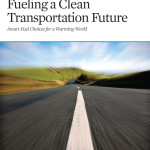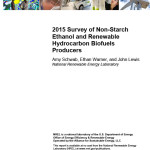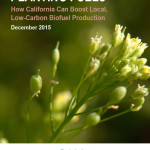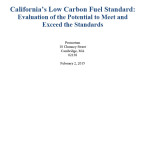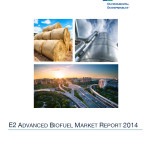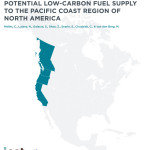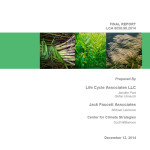California Clusters of Opportunity
Last week California Energy Commission released a report it commissioned on California’s Advanced Transportation Industry, and the clusters of opportunity it provides.
Although it lacks a clever acronym (it calls the alternative and renewable fuel and vehicle industry the ARFV industry, which could pass as onomatopoeia for my dog’s bark), the report is a highly useful tool to understand the state of the alternative fuel market, what policies have driven this development, and how to better prepare the state for alternative fuels & vehicle integration, including regional efforts and workforce development.
Some interesting tidbits from the report include:
- Private sector investors are providing most of the financial resources to alternative fuels and vehicles, at about 91 percent in 2012. Although overall cleantech investments were down in 2012, this sector saw a 32 percent increase from 2011.
- From 2007-2013, there has been a 75% increase in biofuel projects in California, concentrated on advanced biofuels. The San Joaquin Valley is host to the majority of biofuel projects, due to its abundance of biomass.
- California residents have nearly doubled the number of alternative vehicles registered since 2006, reaching 2.3 percent of all vehicle registrations in the state in 2011. (since the release of the Tesla Model S, this has presumably bumped).
- The San Joaquin Valley has the highest concentration of alternative vehicles of any region in California. Most of these are flex-fuel vehicles.
- The counties most taking advantage of the state’s $2,500 clean vehicle rebate for zero emission vehicles? Los Angeles and Orange Counties win the prize, with 38% of all these rebates going to this area.
- Recharging an electric vehicle has never been easier. According the U.S. Department of Energy, 83 percent of the public electric charging stations in California opened in the last two and a half years.
- Several state programs promoting the growth of alternative fuel stations have paid off: California leads the country in public access alt fuel stations, with double the number of stations per million people as the #2 ranked state, Texas. (36.1 stations per million people versus 17.8)
- California employment by the alt vehicle and fuel industry has grown at a steady pace since 2001, and appears to have continued growth through the recession. Most of these jobs have annual wage greater than $40,000 and require less than a bachelor’s degree. See Figure 13 for a breakout of the sectors and growth.
The report further details the regional breakdowns of jobs and economic activity coming from the alternative fuel and vehicle industry, providing early returns and proof of the efficacy of California’s policies to diversify our transportation options.
Filed in: Blog • Mary Solecki






